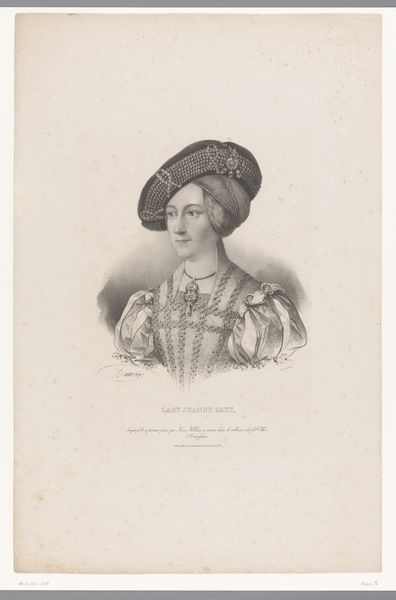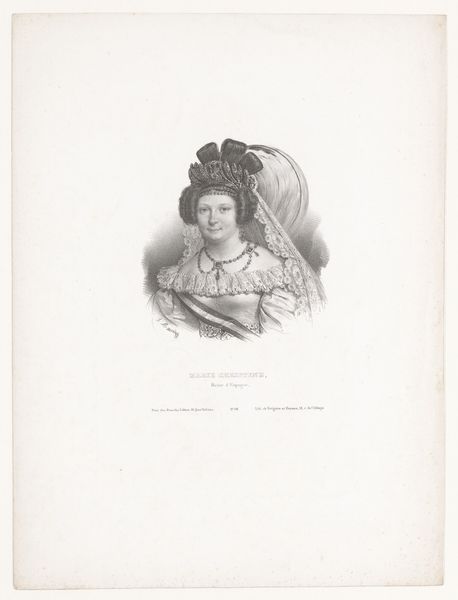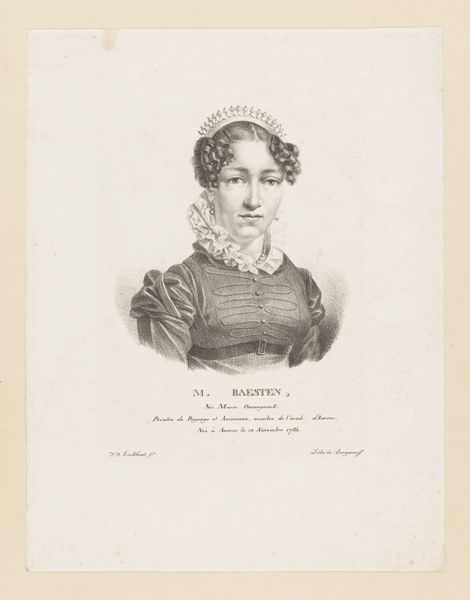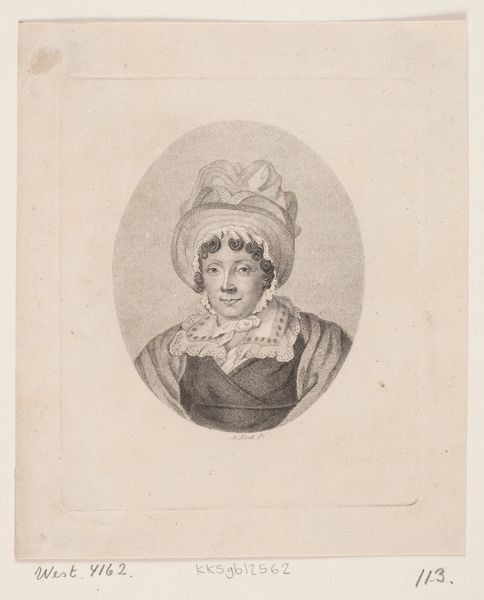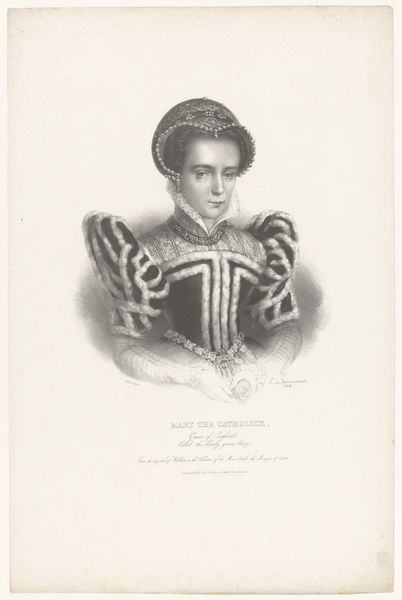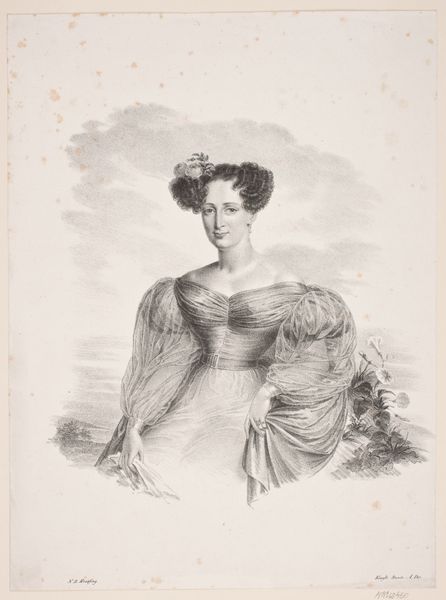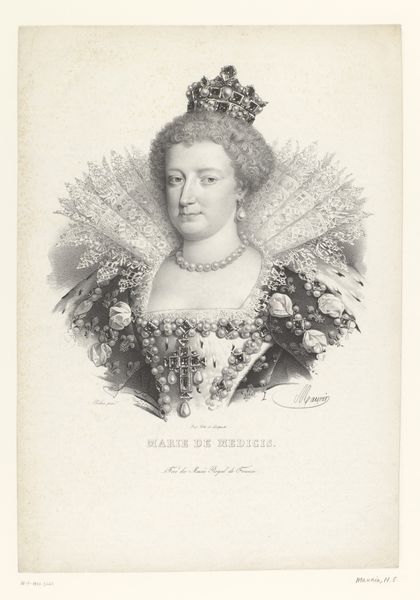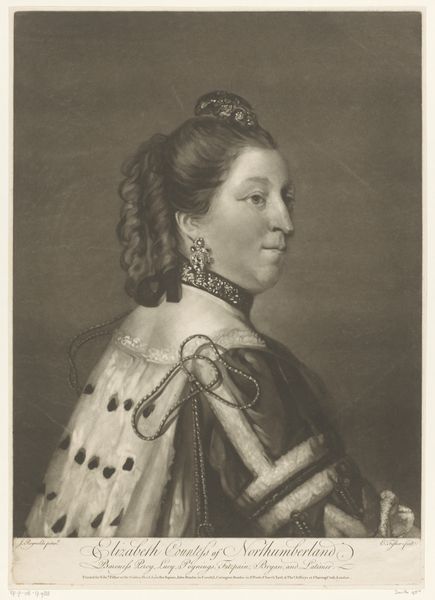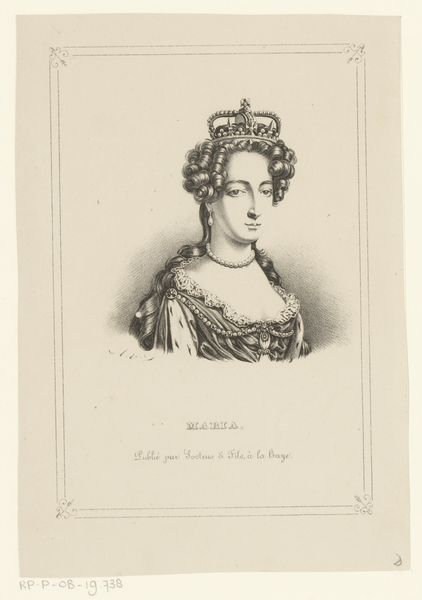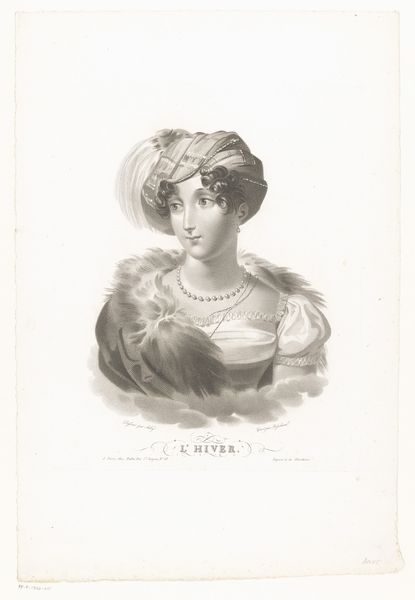
Mary Stuart, At the age of Sixteen (from Memoirs of Eminent Englishwomen) 1844
0:00
0:00
drawing, print, engraving
#
portrait
#
drawing
# print
#
portrait drawing
#
history-painting
#
engraving
Dimensions: Plate: 9 1/16 × 5 15/16 in. (23 × 15.1 cm) Sheet: 17 3/8 × 11 11/16 in. (44.2 × 29.7 cm)
Copyright: Public Domain
Curator: We're looking at a stipple engraving titled "Mary Stuart, At the age of Sixteen", a print created in 1844. Editor: The contrast of the fine lines makes her seem quite fragile and reserved, despite the opulent dress. A poised stillness radiates from the image. Curator: Indeed. As a stipple engraving, the tonality is built up with dots rather than lines, which contributes to that softer, more delicate effect. It was based on an original portrait and reproduced for "Memoirs of Eminent Englishwomen." This places it firmly within a visual culture aimed at the consumption and moral instruction of women, framed within notions of British national identity. Editor: Looking closely at the image’s formal structure, I see how her ornate ruff and elaborate headdress visually enclose her face, heightening the sense of constraint and emphasizing her youth and apparent vulnerability, like she's been staged or confined. Even the details of her pearl necklace contribute to this feeling of being adorned, almost trapped by embellishments. Curator: Exactly. The artist, Joseph Brown, strategically employs symbolism—her attire broadcasts both her noble status and, implicitly, the burden of responsibility placed on her as a future queen during a volatile time. It suggests much about 19th-century Britain's fascination with figures like Mary Stuart, whose life was filled with conflict. Prints such as this kept her legacy alive within a domestic context. Editor: I hadn't considered it, but now that you mention it, even her almost wistful expression—captured in a series of carefully placed dots—seems staged, ready to face whatever comes next, yet retaining her demure character. The choice of a reproductive engraving underscores how such images can both document and mythologize a figure, shaping historical memory for contemporary audiences. Curator: Absolutely. The piece truly highlights how social history is often conveyed and encoded by these stylistic choices. Thank you. Editor: It was wonderful to look so closely at these lines, considering how visual elements contribute so much to what we understand of history, one little dot at a time.
Comments
No comments
Be the first to comment and join the conversation on the ultimate creative platform.
